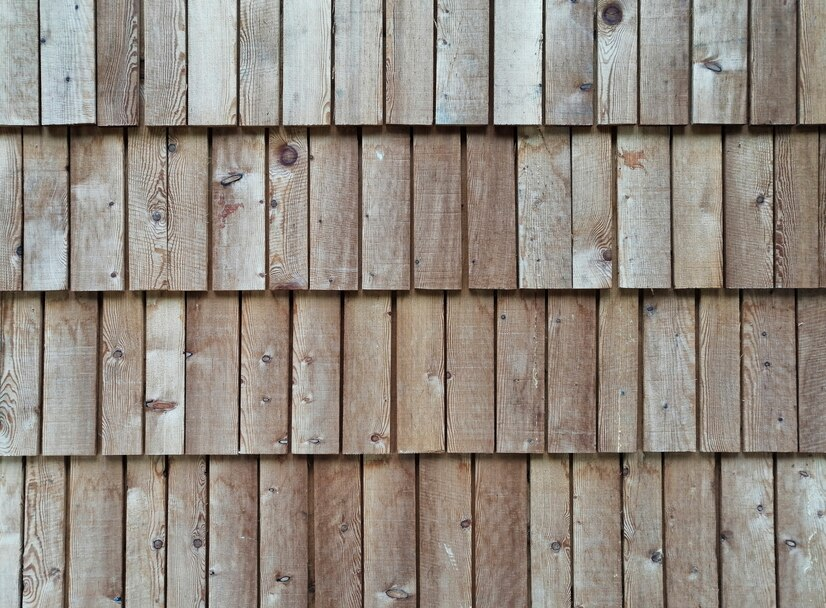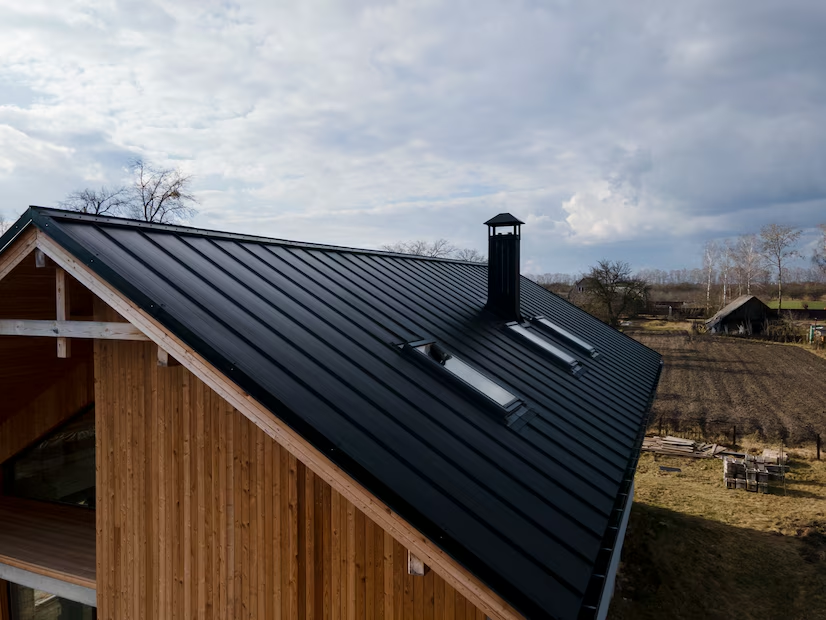Top 10 Roofing Materials to Consider
- Staff Desk
- 1 day ago
- 7 min read

In this article, we'll explore the top 10 roofing materials to consider, discussing their pros, cons, and ideal applications. By the end, you'll have a clear understanding of which roofing material might be the best fit for your needs.
1. Asphalt Shingles

Asphalt shingles are the most popular roofing material in North America, largely due to their affordability and ease of installation. They are made of fiberglass or organic felt, coated with asphalt and mineral granules. This combination not only provides durability but also offers a wide range of aesthetic options, making it a versatile choice for many homeowners.
Pros:
Cost-effective: Asphalt shingles are among the most affordable roofing options, making them accessible for a wide range of budgets. This cost-effectiveness extends to both material and installation costs, making them a popular choice for new homes and roof replacements alike.
Easy to install and repair: Their lightweight nature and flexibility make asphalt shingles relatively easy to install, even for DIY enthusiasts. Additionally, if a shingle is damaged, repairs are straightforward and can often be done without professional help.
Available in a variety of colors and styles: The aesthetic versatility of asphalt shingles cannot be overstated. Homeowners can choose from a plethora of colors and styles, including architectural shingles that mimic more expensive materials like wood or slate.
Cons:
Shorter lifespan compared to other materials: While asphalt shingles are cost-effective, they typically have a shorter lifespan of about 15-30 years compared to other materials like metal or slate. This means that homeowners may face more frequent replacements over the lifetime of their home.
Can be prone to wind damage: In areas prone to high winds or severe weather, asphalt shingles can sometimes suffer damage. It's essential to choose high-quality shingles and ensure proper installation to mitigate this risk.
Best For:
Homeowners looking for an affordable roofing solution with various design options. Asphalt shingles are particularly well-suited for those who value aesthetic variety and ease of maintenance over the longest possible lifespan.
2. Metal Roofing

Metal roofing is known for its durability and resistance to extreme weather conditions. It's made from materials like aluminum, steel, copper, and zinc. This diversity in materials allows for a range of finishes and styles, from sleek modern designs to traditional rustic looks.
Pros:
Long lifespan (up to 50 years or more): Metal roofs are incredibly durable, often lasting two to three times longer than asphalt shingles. Their longevity makes them a cost-effective choice in the long run, despite higher upfront costs.
Energy-efficient: Metal roofs reflect solar radiant heat, which can reduce cooling costs by 10-25%. This makes them an ideal choice for homes in warmer climates where energy efficiency is a priority.
Fire-resistant: Metal roofing materials are non-combustible, offering excellent fire resistance. This feature can be particularly important in areas prone to wildfires or in homes with wood-burning fireplaces.
Cons:
Higher upfront cost: The initial investment for a metal roof is higher than many other options. However, the extended lifespan and energy savings can offset this cost over time.
May require professional installation: Due to their complexity and the need for precise installation techniques, metal roofs often require professional installation, adding to the overall cost.
Best For:
Those seeking a durable and long-lasting roofing option, particularly in areas prone to severe weather. Metal roofing is ideal for homeowners who prioritize durability and energy efficiency, and who are willing to invest upfront for long-term benefits.
3. Wood Shingles and Shakes

Wood shingles and shakes offer a natural look with a rustic charm. They are typically made from cedar, redwood, or pine. This natural material not only provides a unique aesthetic but also improves with age, developing a beautiful patina over time.
Pros:
Attractive, natural appearance: Wood shingles and shakes provide a warm and inviting look that complements a variety of architectural styles, from traditional to modern. Their natural appearance can enhance the curb appeal and value of a home.
Good insulation properties: Wood is a natural insulator, helping to keep homes warmer in the winter and cooler in the summer. This can lead to energy savings and increased comfort for occupants.
Cons:
Requires regular maintenance: To maintain their appearance and performance, wood shingles and shakes need regular treatment to prevent mold, rot, and insect damage. This maintenance can be a significant time and financial commitment for homeowners.
Not fire-resistant unless treated: Untreated wood is highly flammable, making fire treatment essential, especially in areas prone to wildfires. Treated wood can mitigate this risk but at an additional cost.
Best For:
Homeowners who desire a natural aesthetic and are willing to perform regular maintenance. Wood shingles and shakes are ideal for those who appreciate the unique character and charm that natural materials offer.
4. Clay and Concrete Tiles

Clay and concrete tiles are known for their durability and classic appearance, often used in Mediterranean, Spanish, or Southwestern-style homes. Their robust nature and aesthetic appeal make them a popular choice for homeowners seeking a distinctive look.
Pros:
Long-lasting: Both clay and concrete tiles are incredibly durable, with lifespans that can exceed 50 years. This longevity makes them a cost-effective choice over time, despite a higher initial investment.
Resistant to fire and insects: These materials are inherently fire-resistant and do not attract insects, making them a low-maintenance option for those concerned about such risks.
Cons:
Heavy, may require additional structural support: The weight of clay and concrete tiles is significant, often necessitating additional structural support during installation. This can add to the cost and complexity of a roofing project.
Higher cost: The initial cost of clay and concrete tiles is higher than many other roofing materials. However, their durability and aesthetic appeal can make them a worthwhile investment for those who can afford the upfront expense.
Best For:
Homes with a strong structure and a design that complements the classic look of tiles. Clay and concrete tiles are particularly well-suited to architectural styles that benefit from a traditional or Mediterranean aesthetic.
5. Slate Roofing

Slate is a natural stone that offers a distinctive and elegant appearance. It is one of the oldest roofing materials still in use today, known for its timeless beauty and exceptional durability.
Pros:
Extremely durable and long-lasting: Slate roofs can last 75 to 100 years or more, making them one of the longest-lasting roofing options available. This durability, combined with their classic appeal, makes slate an excellent choice for those seeking a long-term investment.
Aesthetic appeal: The unique texture and color variations of slate provide a sophisticated and elegant appearance that enhances the architectural beauty of any home.
Cons:
Very heavy, requiring professional installation: The weight of slate is considerable, requiring robust structural support and professional installation. This complexity increases both the cost and time required for installation.
Expensive: The cost of slate is among the highest of all roofing materials. However, for those who can afford it, the investment is often justified by the material's unmatched durability and beauty.
Best For:
Historic homes or those seeking a high-end, long-lasting roofing solution. Slate is ideal for homeowners who prioritize elegance and durability and are willing to invest in a premium roofing material.
6. Synthetic Roofing Products

Synthetic roofing materials are designed to mimic the appearance of natural products like slate and wood, but with added benefits. These materials offer a modern solution that balances aesthetics, performance, and cost.
Pros:
Lightweight and easy to install: Synthetic roofing products are generally lighter than their natural counterparts, making them easier and less expensive to install. This can reduce labor costs and the need for additional structural support.
Lower cost than natural materials: While offering the look of natural materials, synthetics are typically more affordable. This makes them an attractive option for homeowners seeking style without the premium price.
Cons:
Limited availability of styles: Although the variety of synthetic styles is growing, they may not yet match the full range of options available in natural materials. Homeowners may need to compromise on specific aesthetic preferences.
Newer products may have unknown longevity: As synthetic roofing is a relatively new development, the long-term performance of some products is still being evaluated. Homeowners should research brands and products carefully before making a decision.
Best For:
Homeowners looking for a balance between aesthetics and functionality without the high cost of natural materials. Synthetic roofing is ideal for those who desire the look of slate or wood but require a more budget-friendly option.
7. Rubber Roofing

Rubber roofing, often made from recycled tires, offers an eco-friendly option for flat or low-slope roofs. This sustainable choice combines environmental responsibility with practical performance.
Pros:
Environmentally friendly: By utilizing recycled materials, rubber roofing contributes to sustainability efforts and reduces landfill waste. This eco-friendly aspect appeals to homeowners committed to green living.
Durable and resistant to leaks: Rubber roofing is highly durable and offers excellent resistance to leaks and weather damage. Its flexibility allows it to expand and contract with temperature changes, reducing the risk of cracking.
Cons:
Limited to flat or low-slope applications: Rubber roofing is best suited for flat or low-slope roofs, limiting its applicability for certain home designs. Homeowners with pitched roofs may need to explore other options.
May not have the same aesthetic appeal as other materials: While functional, rubber roofing may not provide the same visual appeal as more traditional materials. This can be a consideration for homeowners focused on aesthetics.
Best For:
Flat or low-slope roofs, particularly those seeking an eco-friendly option. Rubber roofing is an excellent choice for environmentally conscious homeowners who need a practical and durable roofing solution.
Conclusion
Choosing the right roofing material for your home involves considering a variety of factors, including cost, durability, aesthetics, and environmental impact. Whether you prioritize longevity, style, or energy efficiency, there's a roofing material that fits your needs.
Evaluate each option carefully and consult with a roofing professional to ensure the best choice for your home. A well-chosen roof not only enhances your home's curb appeal but also protects your investment for years to come. By understanding the pros and cons of each material, you can make an informed decision that aligns with your preferences and budget.